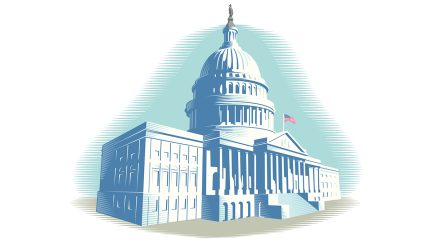For more stories like this, sign up for the PLANADVISERdash daily newsletter.
Past Proposals to Tax Qualified Retirement Plans Have Never Gotten Far
Industry has always organized to defeat even marginal changes to the tax-preferred status of DC plans.
A study published by Andrew Biggs and Alicia Munnell for the Center of Retirement Research at Boston College advocated taxing tax-advantaged plans in order to help pay for Social Security. The study provoked a wider debate on the utility of qualified plans and the need to find ways to pay for Social Security, which is projected to have to cut benefits by about 23%, starting in 2034.
The total cost to federal revenue of qualified defined contribution accounts, both employer-sponsored and individual retirement accounts, comes out to about $185 billion annually, according to Biggs and Munnell. Biggs says the tax break “really doesn’t raise retirement savings very much,” because much of the tax benefit goes to higher earners who would be saving in any case. The tax preference for retirement accounts prompts many people, especially wealthier savers, to “simply shift money from taxable accounts to untaxed accounts;” those savers are “in no danger of running out of money,” Biggs says.
Beyond simply removing tax-preferred status, the Biggs-Munnell study also discussed subjecting employer retirement contributions to FICA taxes so that revenue can be collected for Social Security and Medicare upfront, similar to how traditional employee contributions do not discount an individual’s taxable income for FICA.
Biggs acknowledges that this reform is a bit less straightforward, because calculating income this way would also entitle those workers to more Social Security benefits when they retire.
Legislative Proposals
But what proposals have actually been made to modify the tax status of DC plans, regardless of the benefits to Social Security?
One such proposal came in 2014 from former Representative David Camp, R-Michigan, then the chairman of the House Committee on Ways and Means. His proposal which would have frozen inflation adjustments for DC plan contributions for 10 years. That would have the effect of gradually reducing the real cap on tax-advantaged contributions and potentially raising more revenue. The proposal was issued as a discussion draft and was never voted on.
Other potential proposals were discussed in 2017 in the lead-up to the Tax Cuts and Jobs Act. According to Brigen Winters, a principal in Groom Law Group and an organizer of Save Our Savings, an advocacy that pushed back against the 2017 proposals, some lawmakers wanted to push more savings into after-tax Roth source accounts, so the money saved would be taxed up front to raise more short-term tax revenue.
Specifically, Winters says some lawmakers proposed limiting traditional pre-tax contributions to less than Roth contribution or requiring that at least 50% of employee contributions be made on an after-tax basis. None of these proposals made it into proposed legislation.
Winters says these proposals were partially designed to satisfy Congressional budget scoring rules, which evaluate the cost of all federal spending bills based on their impact on federal revenues in a 10-year window from the date of enactment. Since traditional contributions are pre-tax and Roth post-tax, Roth contributions generate more tax revenue within the 10-year window than traditional pre-tax contributions. In reality. traditional contributions are merely tax-deferred, so they are taxed as income when they are withdrawn from the retirement account, whereas the earnings in a Roth account are tax-exempt.
The so-called “Rothification” proposals such as these faced industry resistance because the short-term tax incentive makes it easier for many to save for retirement. The Rothification proposals “never got very far,” Winters says.
Winters notes that the perception that Roth accounts generate more federal tax revenue than traditional accounts is misleading, and some lawmakers have caught on and proposed either taxing the interest on large Roth balances or compelling distributions from them. These proposals also have not advanced into legislation.
There was an echo of this Rothification debate during discussions ahead of passage of the SECURE 2.0 Act of 2022, Winters explains. A provision of SECURE 2.0 requires catch-up contributions by highly compensated employees to be made on a Roth basis, an inclusion made solely to generate revenue in the short term to pay for other provisions in the bill. Winters says that industry did not push back because the legislation, as a whole, was very popular with groups in the retirement industry.
Lastly, Winters says Camp’s 2014 proposal to de-index contribution limits from inflation for a limited period of time came up again in 2017 during discussion of the Tax Cuts and Jobs Act. Once again, he says, it was resisted and defeated by industry.
In recent years, efforts to tax qualified plans or erode the contribution levels through inflation have all been defeated before any formal legislative proposal could even be made. But that does not mean it is not on people’s minds, both in Congress and in academia.
You Might Also Like:

403(b) Plans Have Special Considerations When Complying with SECURE 2.0

Answering Questions About SECURE 2.0 Catch-Up Provisions






